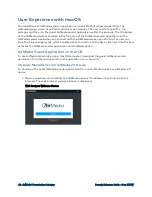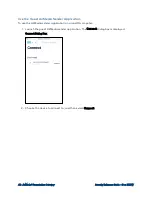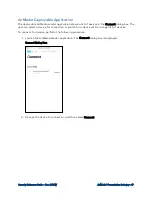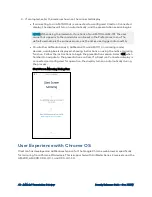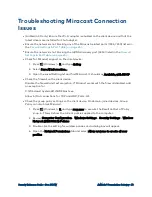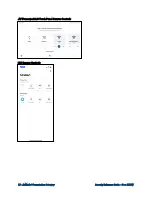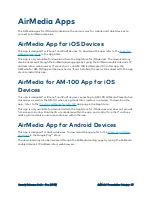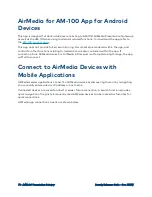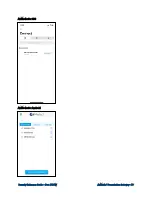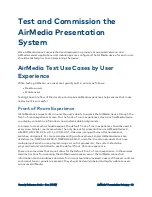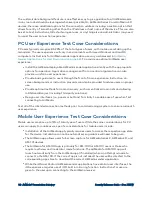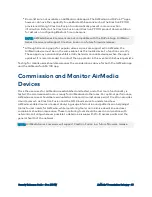
Security Reference Guide — Doc. 7693W
AirMedia® Presentation Gateway • 71
Miracast
Miracast is a mirroring protocol and wireless technology used to project your screen to the
AirMedia receiver without the need to install an AirMedia sender application on your computer.
Miracast is supported on AirMedia Series 3 and AirMedia 2.0 (CCS-UC-1, CCS-UC-1-X, AM-200,
and AM-300) products.
Required Wireless Adapter
(AirMedia 2.0)
Miracast on AirMedia 2.0 requires the addition of a Wi-Fi network USB Adapter (sold
separately). There are two iterations of this adapter available:
l
(Sold in the United States)
l
(Sold Internationally)
Both versions of the adapter support 802.1A/B/G/N/AC wireless networking standards on both
the 2.4 GHz and 5 GHz frequencies.
The difference between the US and International Model is the supported Wi-Fi channels.
l
US
2G Channels: 1, 2, 3, 4, 5, 6, 7, 8, 9, 10, 11
5G Channels: 36, 40, 44, 48, 149, 153, 157, 161, 165
l
World
2G Channels: 1, 2, 3, 4, 5, 6, 7, 8, 9, 10, 11, 12, 13
5G channels: 36, 40, 44, 48, 149, 153, 157, 161, 165
Miracast Behavior – How it Works
Users connect to a Miracast receiver using the Windows connect menu. The Windows connect
menu can be accessed via the Windows notification center or using the shortcut
(Windows) +
K. On touch-capable Windows 10 devices, swipe in from the right edge of the screen.
Miracast connection has two phases: the discovery phase and the connection phase. The
discovery phase uses Wi-Fi based discovery. For this reason, the AirMedia Wi-Fi USB adapter is
required for Miracast functionality.
After the list of Miracast receivers is discovered, the user will select a device from the list.
Windows 10 will first connect to the Miracast receiver via the existing infrastructure. This is done
by resolving the host name through mDNS, then connecting to the receiver over the






